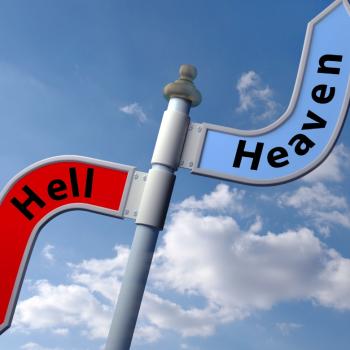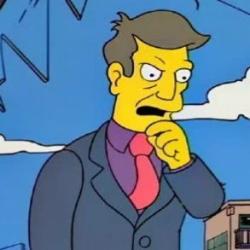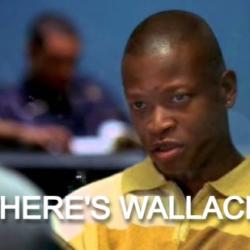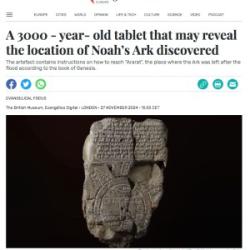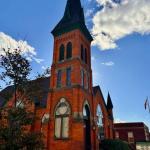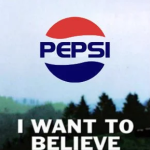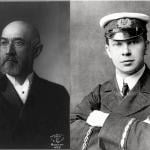Part of what I liked about that recent statement from the faculty of Wheaton College was that it didn’t seem desperate for applause. It seemed intended to add the signatories’ weight to the proper side of the scale rather than to claim credit or seek commendation for having weighed in. I commended it for not centering itself and seeking cookies or gold stars or ally credits — and thus, apparently, have alas offended some of those involved for failing to grant any of those rewards. (I’m not actually in charge of handing those out, but whatever.)
What I like about the statement, in terms of Drew Hart’s illustration, was that it seemed more interested in contributing something substantial than in just piling on the condemnation of Paula Deen as a means of proclaiming a personal or institutional exemption from the sins for which she was being punished. It’s true that this statement barely moved beyond the “sophisticated cultural reflex” of calling out what Hart calls “old-school racism,” but it nods and points in that direction, following its least-one-can-do condemnation of the Klan and Nazism with a prompting to consider that there may also be implicit and systemic manifestations of the same white supremacist ideologies. It doesn’t quite cross the line — in terms of the old church joke — from “preaching” to “meddling,” but it says a bit more than just what it knows would get the easy “Amen.”
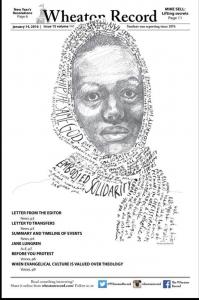
And that, I think, is commendable. But Wheaton Prof. Noah Toly suggests I’ve misinterpreted some of that. He says, in short, that it’s none of my beeswax. Toly says we should all learn to be more reluctant to weigh in on other institutions’ situations.
Let’s just note that this is a very odd take just after releasing a public statement that was produced and publicized in the form of an open letter to the world. Particularly given that the public statement released to the public was about other institutions. Whatever else is true about “Unite the Right” and the Klan and such, they are “other institutions,” and it would seem odd to dismiss Wheaton’s statement in response to them as overconfident in its ability to see their situation from the outside. I’m glad Toly et. al. were not, in that case, timidly reluctant to weigh in.
In any case, my discussion about the faculty-lounge dynamic was apparently not as clear as I’d hoped. I suspect this may be due partly to a drive-by reading that isn’t up to speed on what I and others have written about the gap between the evangelical “faculty lounge” and the broader white evangelical constituency. But let that pass. I’ll presume that the failure is mine and apologize for not being clearer in that one post about the gatekeeping function that censors — or causes “faculty lounge” evangelicals to self-censor — anything likely to provoke “controversy.”
This is occasionally (and infamously) an explicit process with public rebukes and censure and the like. Gatekeeping administrators may require changes in lectures or cancel “controversial” talks that say too much. Sometimes that explicit form of intervention even results in tenured faculty getting maligned and then fired (and then, sometimes, implicitly maligned again, perpetually — see below).
But that’s not how it works most of the time. It doesn’t need to. Occasional reminders of where the lines are drawn are sufficient. Most of the time, nothing needs to be said.
So I have no doubt that Dr. Toly’s description of the process drafting the Wheaton faculty statement is accurate:
As the statement was drafted and revised, faculty had the advantage of counsel from administrators and staff who did not, as far as I know (I was involved in some, but not all, of those conversations), make any attempt whatsoever to stifle or soften the faculty voice. To the contrary, I believe that the statement is a better one because faculty were open to early conversation about the statement and because of the input that faculty received. Moreover, President Philip Ryken has taken the opportunity during orientation to bring the issue of racial justice before new students and parents. He has used his own platform to acknowledge, affirm, and amplify the voices of faculty who have spoken out about the issue, commending to our entire community statements and articles by Jamie Aten, Ed Stetzer, and Theon Hill, along with the statement signed by more than 150 faculty. The statement has been cited in The Atlantic, which has, I think, an audience well beyond our classrooms and faculty lounges.* There have been no repercussions, and so it seems a stretch to say that there is any concerted effort to prevent faculty from speaking on potentially divisive issues. I cannot speak for all of my colleagues, but looking at it from my perspective on the inside, the process of drafting, revising, and disseminating the statement has been evidence of collaboration and mutual respect between the faculty and the administration.
His description is perfectly congruent with what I described.
The point is not that there would somehow be “repercussions” for the signatories of this statement, but that it was crafted in such a way as to avoid any possibility of such repercussions. I didn’t expect Ryken or nervous white parents or even any wealthy donors (*cough* DeVos *cough*) to balk at a condemnation of the “white supremacist ideologies” advocated by “neo-Nazis, the Ku Klux Klan, the alt-right and other white nationalist movements.” Condemning such groups emphatically and publicly is, to quote again from Hart, “the expected response within America’s 21st-century context” and part of “the sophisticated cultural reflex of a highly racialized society that doesn’t want to own up to how racism works systemically.”
It is not, as Hart says, “particularly spectacular or courageous.” Which is to say it is not controversial.
Happily, though, the Wheaton statement offers some tantalizing hints of something more than such a ritual, pro-forma cultural reflex. That little bit about implicit and systemic realities of white supremacy seemed to urge readers to consider more than just the self-serving, exculpatory aspect of chastising Paula Deen and the Klan.
Alas, Toly’s description suggests I may have been wrong in my original guess about the “ongoing negotiation” of how much truth could be expressed in the statement. I was assuming — maybe just hoping — that Wheaton’s faculty was trying to push the envelope. I assumed that they said as much as they could short of potential controversy, but that they wished they could have said more — wished they could have said enough, perhaps, to provoke the sorely needed controversy that speaking the whole truth on this matter would entail.
But, no, Dr. Toly tells us, this is all that they wanted to say. This was the entirety of what they had to say. They had no desire to communicate anything more than the sort of anodyne statements a white university administrator would make “to bring the issue of racial justice before new students and parents.”
That’s disappointing.
In any case, my understanding of Wheaton’s blandly commendable statement is not what really prompted Toly to write about why he’d prefer everyone be “reluctant to weigh in on other institutions’ situations.” The drafting and public release of that statement, after all, is not a “situation.”
But what happened at Wheaton with Dr. Larycia Hawkins sure was. This seems to be the actual sore point and the central preoccupation of Toly’s post:
I know the how big the gap can be between insider experience of and outside perspective on these crises.
Nothing brought this home for me like a lunch with a Wheaton College alumnus last academic year. Our conversation eventually turned to Wheaton’s recent painful episode of December 2015-February 2016. As it turns out, this alumnus holds a PhD in one of the social sciences, teaches at the intersection of social science, ethics, and religion, was teaching a course on the interfaith relations at the time that Wheaton was in the news, made research on our crisis one of the required case studies for that course, and read just about everything (maybe everything) published about what had gone wrong at the college. Despite the earnestness, learnedness, experience, awareness, and investment of this alumnus, we spent most of our time discussing the gaps in their understanding of the situation. Following this illuminating and convicting experience, I took to heart a reluctance to comment on other institutions’ crises, because more often than not I’d have no idea what I was talking about.
It’s interesting, and a bit disturbing, that he never says her name.
The argument here is familiar: “You don’t know me!” Fair enough. But there’s a problem with that — with insisting that “outsiders” must necessarily be misinformed even if they’ve read everything publicly available about the [nameless] situation, and that therefore those outsiders should be reluctant to comment.
What can we outsiders learn from this recent painful episode? What can it show us about the subtle ways the vile ideologies of white supremacy can be embedded implicitly and systemically in our best-intentioned institutions? Nothing. Certainly nothing we should attempt to share aloud with others. We outsiders are mired in a cloud of epistemological uncertainty and must therefore accept our lot with humility, eschewing all opinion, conclusion, lesson, and example as beyond our ken.
Part of the problem here is that a great deal of the public information accessible to “outsiders” came in the form of press releases and press statements from the institution itself. If that information was inaccurate, then the fault does not lie with the recipients of those press releases and official statements, but with those who produced them. We may have been misled, but they did the misleading.
And also too, you know, they were press releases. That is, they were deliberate attempts to produce public discussion by outsiders. It just won’t do to release a series of statements to the press and then complain that the substance of them is being discussed in public. The whole business was conducted publicly — at first in an attempt to publicly reassure the white evangelical public that they didn’t need to fear “controversy,” then in a public attempt at damage control when the school’s earlier public statements went sideways and turned out to be demonstrably uncharitable, misinforming, incorrect and incomplete.
Some of those public statements made to the public by Wheaton officials were apologies. Are we really supposed to disregard those too?
So, no, you don’t get to throw all of this before the public and then complain that “outsiders” from that public have the temerity to “weigh in.” And you don’t get to proclaim that all outsiders are “incorrect” while elaborately refusing to correct whatever it is they’ve supposedly misunderstood.
But there’s a deeper problem with Toly’s non-description descriptions and non-denial denials about what he vaguely and euphemistically refers to as a “recent painful episode.” His argument seems insidious and, well, sleazy.
Unintentionally so, I hope, but still.
Toly suggests that we outsiders think we’ve heard the story about the woman unfairly criticized and dismissed, but says we should just shut up about that because we don’t know the real story.** All of which makes it sound like there was some other reason — something secret and distasteful — for what was done to Dr. Hawkins. Something that must be her fault. By insisting that everyone else’s understanding of that RPE and the context that produced it is incorrect, yet refusing to say how, he winds up half-a-step from the ugly suggestion that “She had it coming.”
Toly name-checks me in the title of his post, but the bulk of what he writes doesn’t seem to be directed at me. It’s directed at a woman he can’t even bring himself to name, and at anyone who thinks she was treated unfairly.
That’s not a good look, and it doesn’t fortify the moral authority claimed in Wheaton’s recent statement. Quite the opposite, really.
– – – – – – – – – – – –
* Citing The Atlantic as an example of mainstream popular culture is a very faculty lounge thing to do. Sure, it may be the most accessibly mainstream title in Brother Mouzone’s stack of magazines, and it may be more geared to undergrads than to PhD’s, but it ain’t People or Us Weekly. Or Christian Living Today.
** Here’s a sampling of the reporting on this Recent Painful Event involving She Who Must Not Be Named:
• “The Professor Wore a Hijab in Solidarity — Then Lost Her Job.” Ruth Graham for The New York Times.
• “How a Facebook comment turned into a nightmare for ‘the evangelical Harvard.'” Sarah Pulliam-Bailey for The Washington Post.
• “Wheaton College could face long-term fallout over professor controversy.” Manya Brashear Pashman for The Chicago Tribune.
• “Questions Linger After Tenured Wheaton College Professor Agrees to Leave.” Elizabeth Dias for Time magazine.
• “Wheaton professor’s suspension is about anti-Muslim bigotry, not theology.” Miroslav Volf in The Washington Post.
Graham and Dias are both Wheaton College graduates. Volf, a theologian at Yale, was celebrated at Wheaton when he spoke there on precisely the same theological matters that served as pretext for Hawkins’ firing.
Fake news, Toly says. That alum he met with had read all of that, and more, and — despite being perfectly equipped to process all of it — was still completely uninformed about the real, true story that only insiders know.
P.S. After her departure from Wheaton, Dr. Hawkins landed a new job at the University of Virginia. She now works and teaches in Charlottesville. That city was, of course, the site of another recent painful episode. Dr. Toly wasn’t there and has only an outside perspective to offer, but he was not reluctant to comment on it. I think his choice to comment on it, despite the possibility of his less than perfectly complete insider’s knowledge, was correct.





